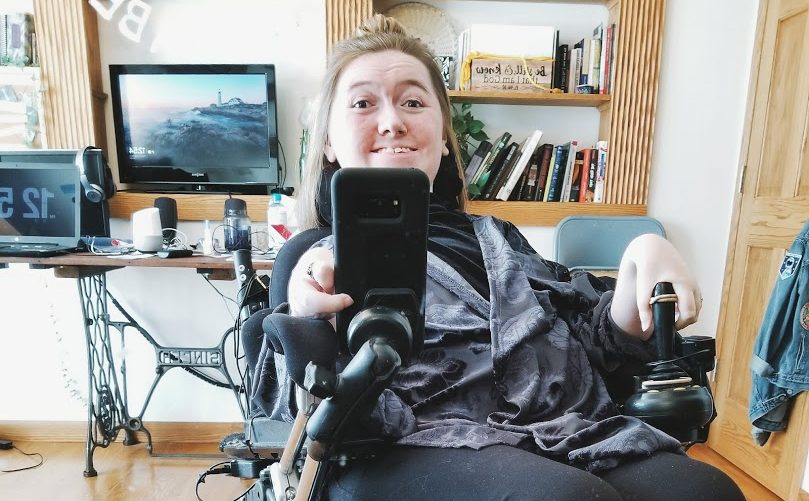Twitter Hashtag Leads to Disability Activism
Written by |

(Courtesy of Brianna Albers)
Those of you who follow me on Twitter may have noticed that I’ve been posting a lot of selfies lately. I’ve written about my complicated relationship with selfies before, and I’m forcing myself to accept the way I look by “presenting” myself in positive ways on social media. But the past few days, it’s been more than just self-acceptance.
Early last week, the hashtag #HotPersonInAWheelchair popped up on my timeline. I follow a lot of disability activists, so I wasn’t surprised so much as I was intrigued. I looked into the origin of the hashtag and quickly found out it was created in response to someone’s claim that there is “nothing sadder than a hot person in a wheelchair.” The disability community banded together to show the world that disability and hotness, beauty, attractiveness, whatever you want to call it, can and do coexist.
I’ve never considered myself hot. But the underlying sentiment, that being in a wheelchair means you cannot be hot, made me angry — angrier than I’ve been in a while. So I went through the selfies tab in Google Photos and chose a couple of pictures that I felt were sufficiently hot enough. Over the next 24 hours, my phone blew up with Twitter notifications. Ninety-seven people liked the tweet, and 11 people retweeted it, including several people in the disability community whom I’ve admired from afar.
I’ve wrestled with my appearance for years. Whenever someone gives me a compliment, I instinctually shrug it off. I don’t wake up every morning with the intention of belittling my looks; I don’t have some deeply embedded distaste for, or hatred of, myself. I just know from years of experience, of silent observation, that I don’t look like everyone else. And logic dictates that, if I don’t look like everyone else, how can I possibly fulfill the requirements of physical attractiveness when those requirements were created by and for everyone else?
I am slowly starting to recognize the danger in that line of thinking. As rational as it is, I am vehemently opposed to the concept of normalcy, that people are supposed to look — or talk, or act — a certain way. I may not look like most of the people I come across daily, but the truth of the matter is that a significant portion of the global population, around 20 percent, lives with some sort of disability. We are part of the natural diversity of the human race. We are part of “everyone else,” which means that hotness should logically be disability-inclusive.
It’s easy to type that and easy to proclaim on social media. But when it comes to everyday life, it’s significantly harder to live. Whenever I say I’m “not normal” during a therapy session, my counselor will look me in the eye and say, “You are normal.” I laugh, shrug it off, and go home with that thought stuck like a mantra: I am normal. I am …
#HotPersonInAWheelchair is arguably taboo: disabled people proclaiming and celebrating their physical appearance, which so often causes angst for those in wheelchairs. But that’s why I love it. I would’ve never thought to call myself hot on social media, but when it takes place in a community — when people like me uplift and extol one another — it becomes something so much more. I’m so glad I got to take part in it. And I hope the author of the tweet realizes now that hot people in wheelchairs are anything but sad.
***
Note: SMA News Today is strictly a news and information website about the disease. It does not provide medical advice, diagnosis, or treatment. This content is not intended to be a substitute for professional medical advice, diagnosis, or treatment. Always seek the advice of your physician or other qualified health provider with any questions you may have regarding a medical condition. Never disregard professional medical advice or delay in seeking it because of something you have read on this website. The opinions expressed in this column are not those of SMA News Today, or its parent company, Bionews Services, and are intended to spark discussion about issues pertaining to spinal muscular atrophy.








Leave a comment
Fill in the required fields to post. Your email address will not be published.